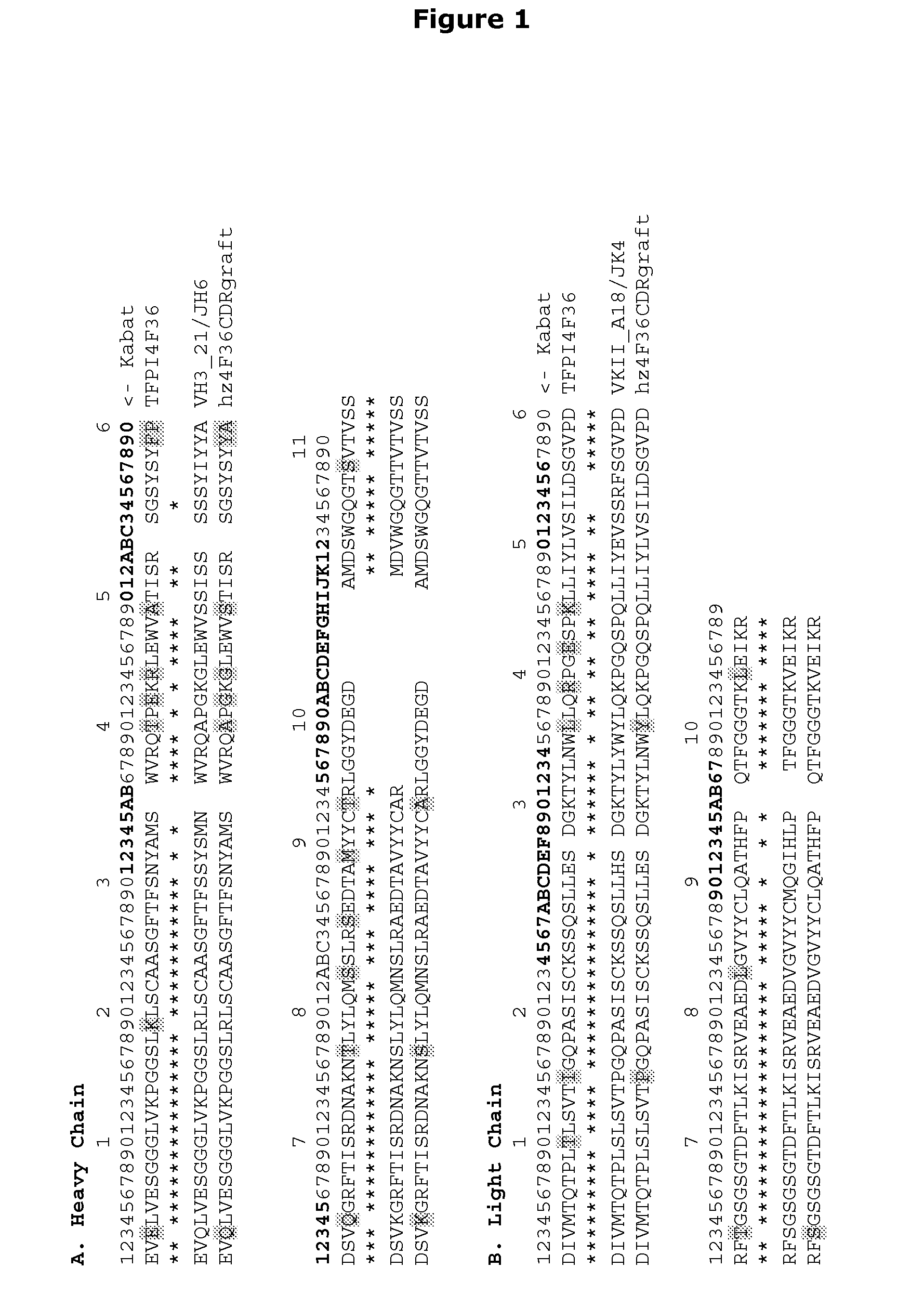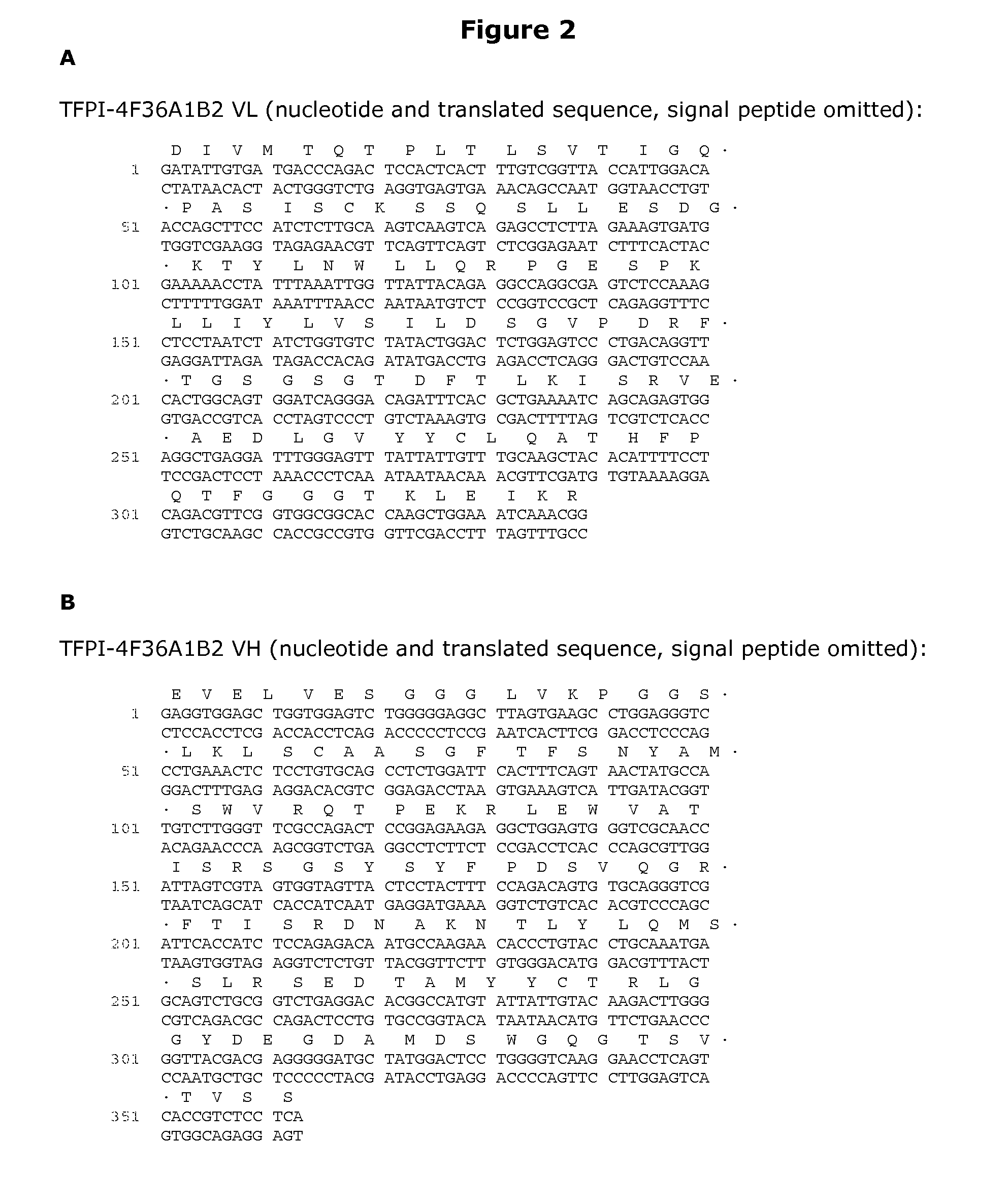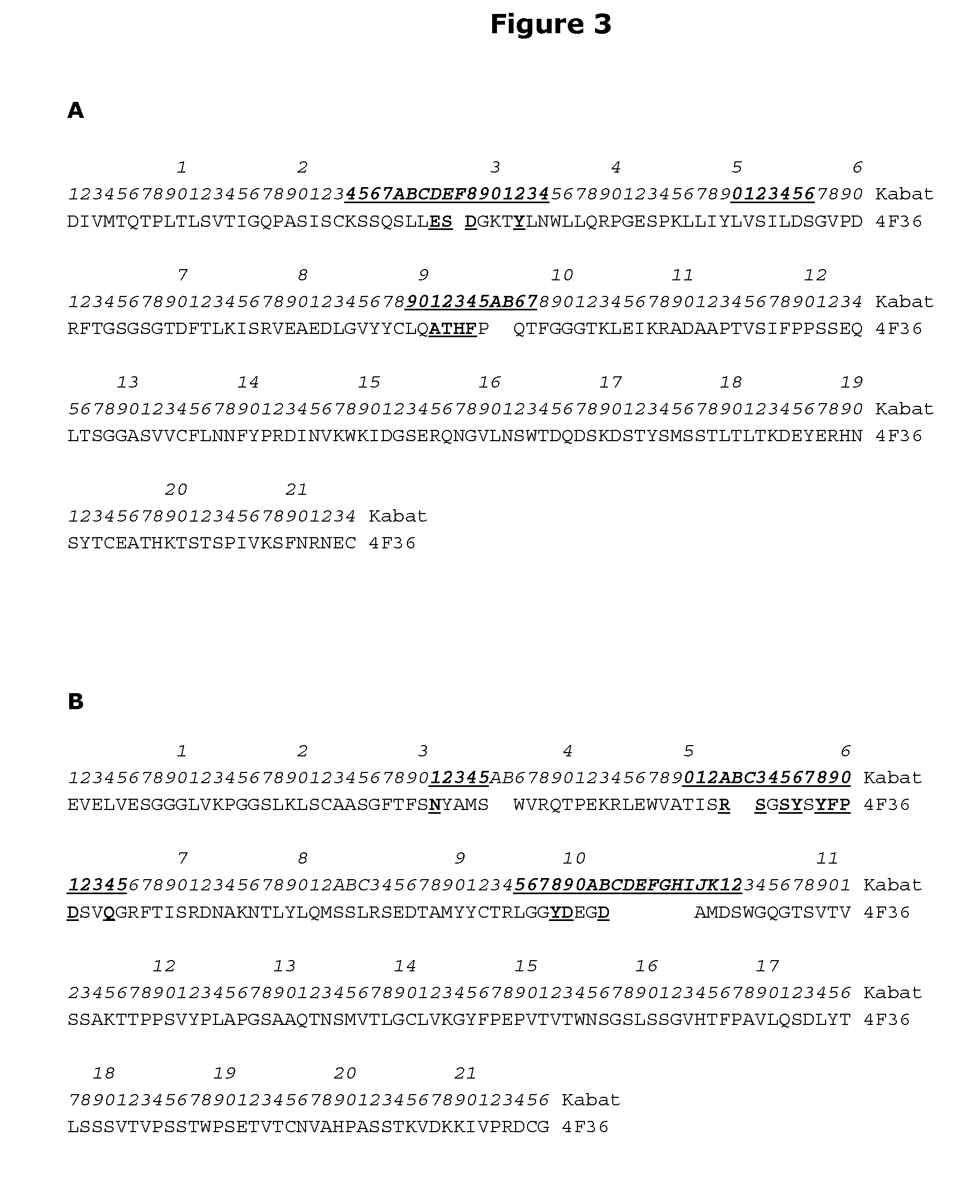Antibodies against tissue factor pathway inhibitor
a technology of tissue factor and inhibitor, applied in the field of antibodies, can solve the problems of ineffective formerly efficient therapy, insufficient blood coagulation, potentially life-threatening bleeding,
- Summary
- Abstract
- Description
- Claims
- Application Information
AI Technical Summary
Benefits of technology
Problems solved by technology
Method used
Image
Examples
embodiments
[0367]The following is a non-limiting list of embodiments of the present invention:[0368]Embodiment 1: A monoclonal antibody that is capable of specifically binding the K2 domain of TFPI, wherein said antibody is capable of binding an epitope comprising one or more residues selected from the group consisting of E10, E11, D12, P13, R17, Y19, T21, Y23, F24, N26, Q28, Q31, C32, E33, R34, F35, K36 and L50 of SEQ ID NO: 2.[0369]Embodiment 2: The monoclonal antibody according to embodiment 1, wherein said antibody is capable of specifically binding an epitope comprising an epitope comprising residue E10 of SEQ ID NO: 2.[0370]Embodiment 3: The monoclonal antibody according to any one of the above embodiments, wherein said antibody is capable of specifically binding an epitope comprising an epitope comprising residue E11 of SEQ ID NO: 2.[0371]Embodiment 4: The monoclonal antibody according to any one of the above embodiments, wherein said antibody is capable of specifically binding an epito...
example 1
Production and Characterisation of Monoclonal Antibodies Directed Against TFPI
[0628]Monoclonal antibodies were generated against tissue factor pathway inhibitor (TFPI). A monoclonal antibody having the desired binding specificity was identified, cloned and sequenced. This antibody was found to significantly reduce cuticle bleeding time in vivo and to lead to no significant drop in platelet number.
Methods and Results
[0629]All kits were used according to the manufacturers' instructions. Abbreviations: HC: heavy chain; LC: light chain; VH: variable domain—heavy chain; VL: variable domain—light chain; PCR: polymerase chain reaction.
Immunisation and Fusion
[0630]Mice were immunized with both full length TFPI and the short version TFPIB161B which contains only the first two Kunitz domains. RBF mice were used for immunizations and production of mouse monoclonal antibodies. Injections were made subcutaneously in the back of the mice. 20 μg protein was mixed with complete Freund's adjuvant fo...
example 2
Cloning and Sequencing of Mouse TFPI4F36A1B2 mAb
[0641]This example describes cloning and sequencing of the murine heavy chain and light chain sequences of anti-TFPI antibody: TFPI4F36A1B2.
[0642]Total RNA was extracted from hybridoma cells using the RNeasy-Mini Kit from Qiagen and used as template for cDNA synthesis. cDNA was synthesized in a 5′-RACE reaction using the SMART™ RACE cDNA amplification kit from Clontech. Subsequent target amplification of HC and LC sequences was performed by PCR using Phusion Hot Start polymerase (Finnzymes) and the universal primer mix (UPM) included in the SMART™ RACE kit as forward primer. The reverse primer identified as SEQ ID NO: 11 was used for HC (VH domain) amplification and the reverse primer identified as SEQ ID NO: 12 was used for LC amplification. PCR products were separated by gel electrophoresis, extracted using the GFX PCR DNA & Gel Band Purification Kit from GE Healthcare Bio-Sciences and cloned for sequencing using a Zero Blunt TOPO PC...
PUM
| Property | Measurement | Unit |
|---|---|---|
| pH | aaaaa | aaaaa |
| concentration | aaaaa | aaaaa |
| concentration | aaaaa | aaaaa |
Abstract
Description
Claims
Application Information
 Login to View More
Login to View More - R&D
- Intellectual Property
- Life Sciences
- Materials
- Tech Scout
- Unparalleled Data Quality
- Higher Quality Content
- 60% Fewer Hallucinations
Browse by: Latest US Patents, China's latest patents, Technical Efficacy Thesaurus, Application Domain, Technology Topic, Popular Technical Reports.
© 2025 PatSnap. All rights reserved.Legal|Privacy policy|Modern Slavery Act Transparency Statement|Sitemap|About US| Contact US: help@patsnap.com



